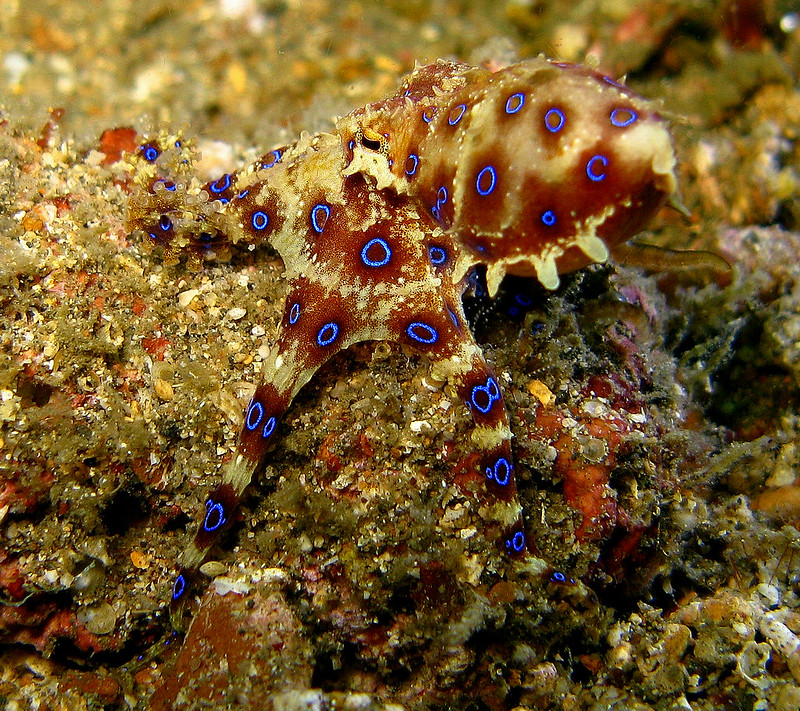The rights of a cephalopod
A new protocol is set to be introduced in the US providing cephalopods (think tentacled sea creatures like octopuses or squid) with rights to protect them from use in research without sufficient authorisation.
As it currently stands, there are no ethical guidelines or barriers around the use of invertebrates in the US, while some rules exist in a few areas of Europe such as the UK. The lack of guidelines protecting cephalopods is not reflective of the intelligence or ecological importance of these deep sea creatures, and returns us to the question of animal ethics in research – is it morally okay to use any kind of animal in human advancements? How can you determine that the benefits of a study will far outweigh the detriment to the animals tested on in the lab?
Due to their complicated nervous systems, it is likely that cephalopods experience pain. While the pain they experience may or may not be similar to that of mammals, it will certainly still affect them. It is also near impossible to measure pain, especially in a species so different from ourselves.
For this reason, the new guidelines are still being considered by the board of ethics. Even if these new protocols are put into place, it will still be challenging to carry out safer research since the biology of pain receptors in cephalopods is not fully understood. And opioids proven to benefit mice may not even be effective in these species.
Used freely until proven morally questionable
The complexity of pain in other species and our lack of interpretation of it, raises the question whether they should all be treated with care and caution as a preventative measure. If all species are treated with a “use freely until proven destructive” attitude then we could be detrimentally harming many species without consideration.
One suggestion might be to invest in the development of safe anaesthesia for each species, before its use in science can be allowed. However, this causes further issues, as implementing it would significantly slow down potentially life-saving research.
Currently the 3R’s principle is followed in many countries and legislations around the world. The 3R’s are replacement (introducing technology which avoids animal use), reduction (using fewer animals) and refinement (minimising their pain where they are required).
There are a myriad of questions to consider when making any decision involving animal welfare in research. Importantly, is endangering the lives of animals ever worth the knowledge we might retrieve from them, and where should we draw the line? While this compromise may be warranted if the outcome could save lives, how ethical is research where the end goal may just be curiosity? Sometimes the use of some animals in research provides critical information which can enhance the conservation of the species as a whole. In this case, is it more or less ethical to use some animals in research for their own conservation where the species is endangered?
Pretty privilege
This discussion also brings into question the bias that people have towards “cute” and “fluffy” animals, or those most like ourselves. There are many laws surrounding the use of mice in research, and while this is as it should be, one can’t help but wonder why cephalopods, which are substantially bigger and arguably just as complex or intelligent as mice, if not more, have no protection in the US, one of the largest scientific research countries in the world. Octopuses are able to complete many problem-solving tasks, such as escaping mazes, to the same level as rats or mice, and are even able to disguise themselves or hide in a way mammals cannot, therefore proving their great intelligence.
Unfortunately, there has always been a protection and conservation bias towards more conventionally appealing animals, as seen with the hype around protecting pandas. Instead, cephalopods have frequently been portrayed in the media to be “alien” and “villainous” (think Squidward or Doctor Octopus for example). While this may seem trivial, media representation does change the public’s perception of this class of animal. Coupled with a general fear of the deep sea, this combination has led to a certain antipathy towards some of the most interesting and intelligent creatures on Earth.
This discussion around the protection of cephalopods in scientific research is only one of many. Research methods can often be invasive and disruptive, even where protective measures are put in. Furthermore, animal testing in drug design and cosmetic manufacture is also famously inhumane and regularly a hot topic in animal rights protests.
Ethics and protection of animals debate
As an institution with world-renowned research centres, the University of Manchester also has to consider the protection of species in their research. This will be discussed at a panel debate with heads and directors of some major research centres. If you would like to learn about more questions such as these encompassing the ethics and protection of animals in scientific research, sign up for the talk taking place on November 28 at Whitworth Hall, from 7pm.
